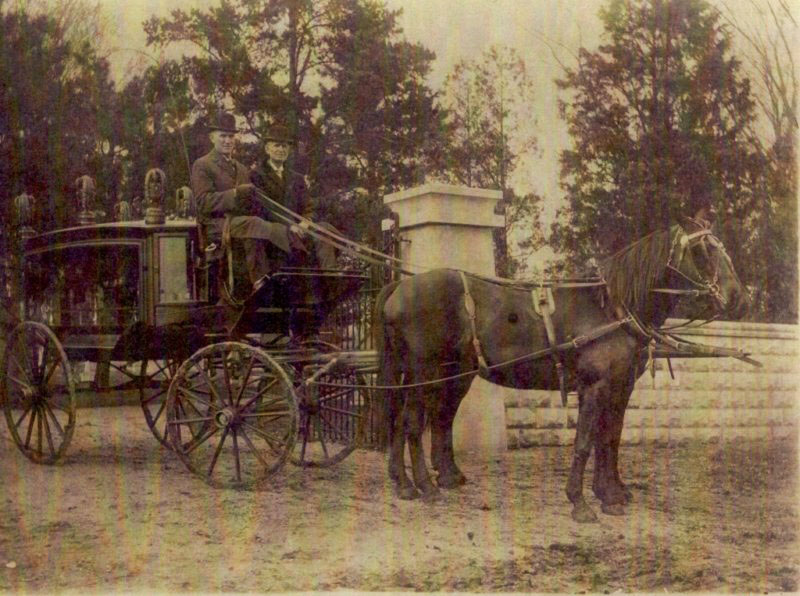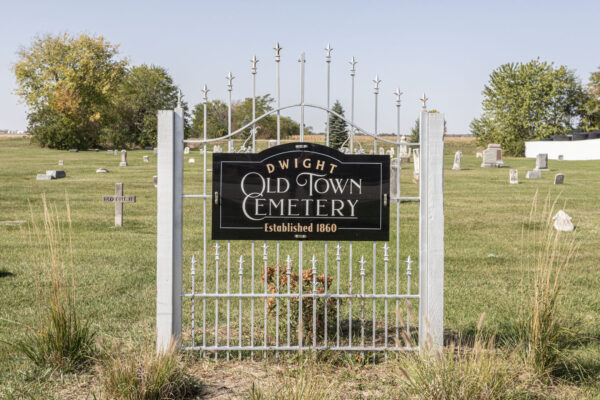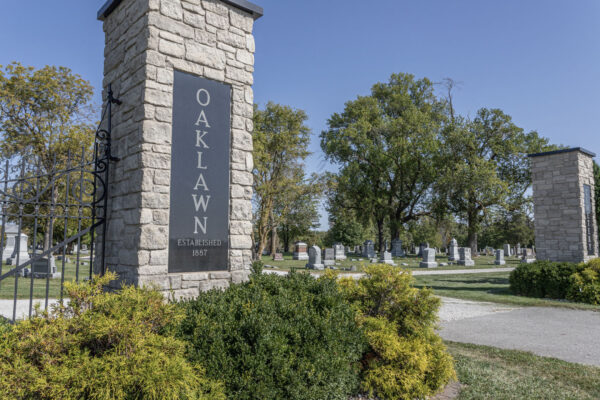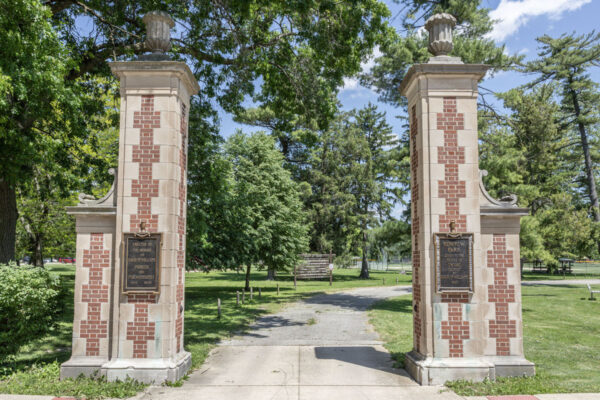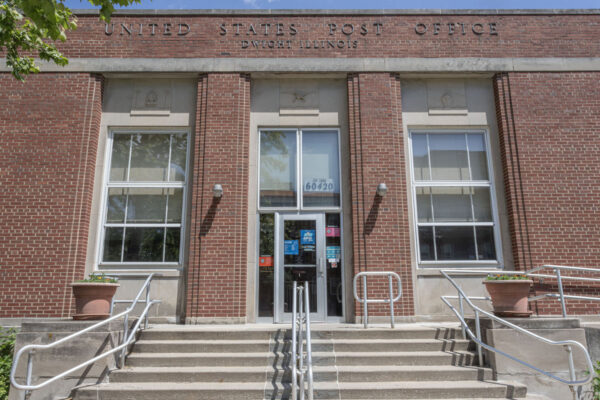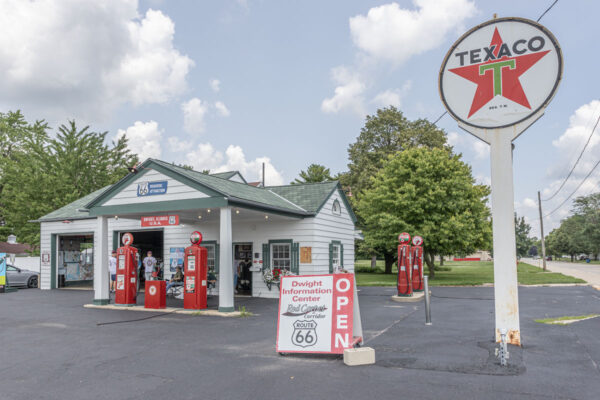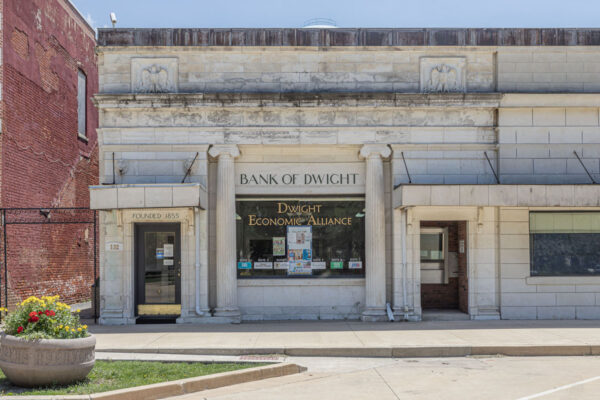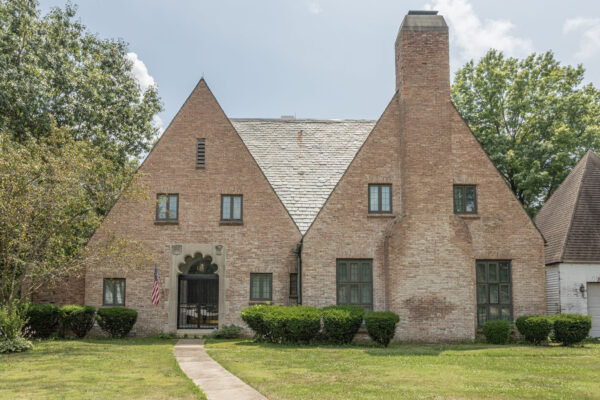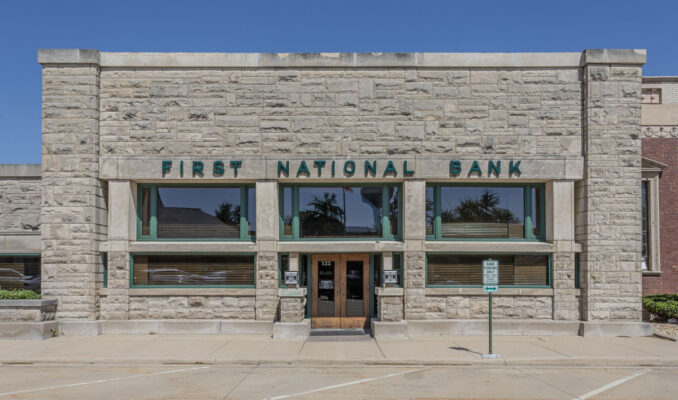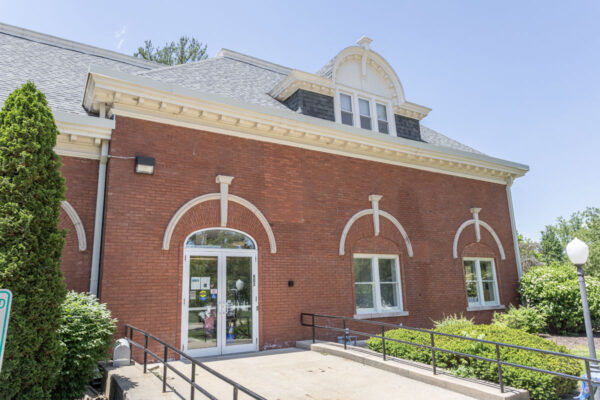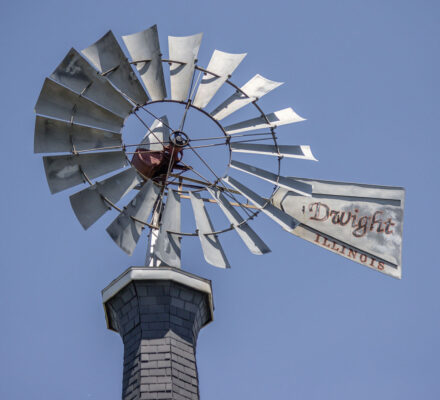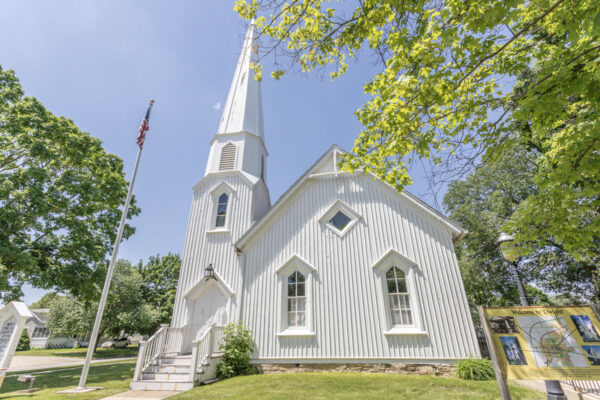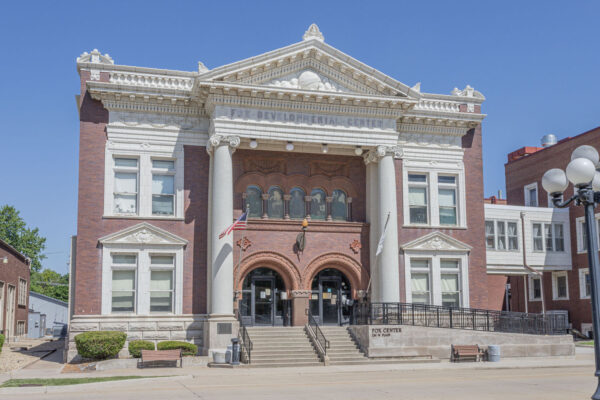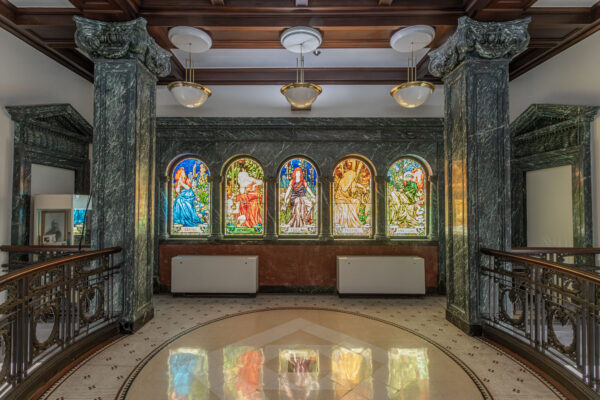Dwight Depot
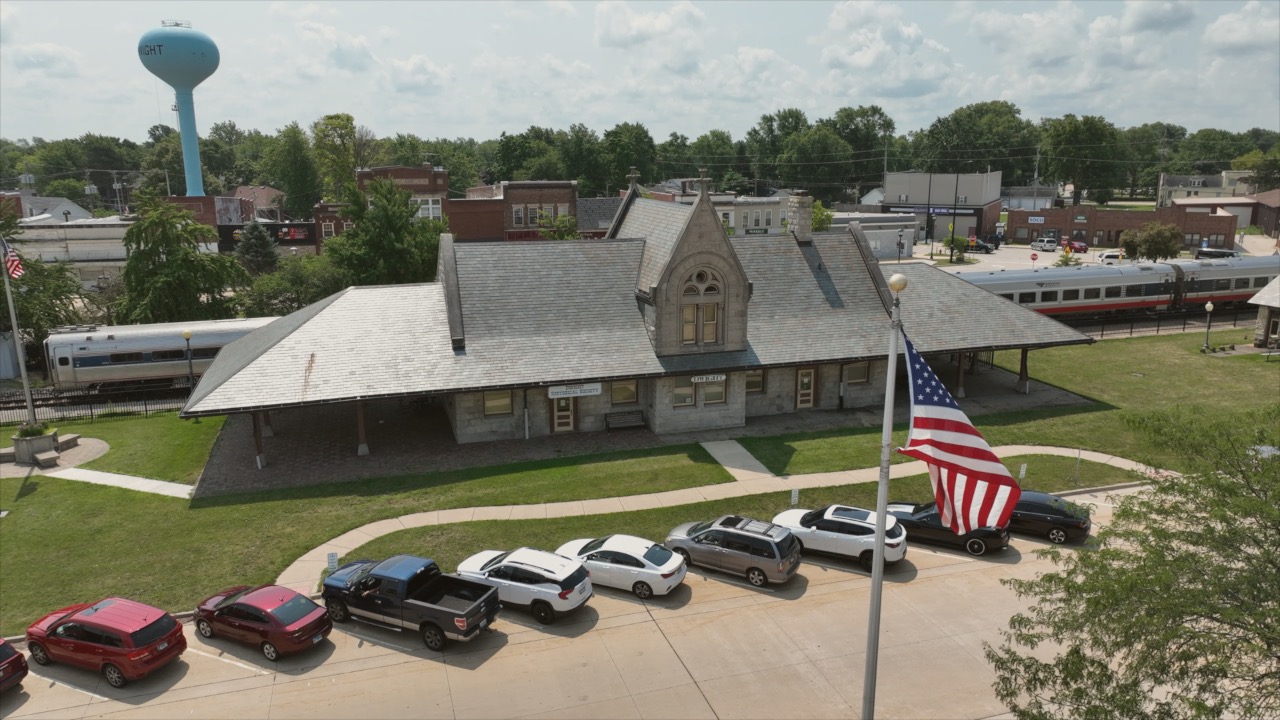
119 West Main Street
The old depot, a one and a half story, 16×24 foot frame building, was erected just south of the current location in 1854. The present depot was built in 1891. It was designed by Henry Ives Cobb, who designed the Chicago Post Office, the Newberry Library, the gothic style buildings on the University of Chicago campus, and other well-known structures.
The building is designed in the Richardsonian Romanesque style. The foundation is Joliet stone, and the building is made of Bedford blue stone from Indiana. There was a waiting room at each end with the ticket office located in the center. Each waiting room had a fireplace and featured a cathedral style ceiling with open rafters.
The new depot was needed to accommodate the large influx of Keeley patients arriving each week by train. At the Keeley’s peak, 20 trains were stopping daily with 700 patients arriving every week for a 4-week treatment period. Often Dwight citizens would meet the trains to see if any celebrities had come to town.
The depot was visited over the years by famous people including Eugene V. Debs in 1893, William Jennings Bryan in 1896, Countess Shimmelman of Denmark in 1899, and Vice President Theodore Roosevelt in 1901. Among the Keeley clients in the 1900’s were the son of Winston Churchill, Gene Autry, and Bing Crosby.
The depot is now used by the Dwight Historical Society to house their museum which features a display of the Keeley Institute, a bench designed by Frank Lloyd Wright for the First National Bank of Dwight, and a bust of Leslie E. Keeley sculpted by Leonard Wells Volk (brother-in-law of Stephen A. Douglas). Volk is most famous for making the life mask of Abraham Lincoln in March of 1860 in Chicago. This mask served as a model for Lincoln at the Mount Rushmore National Monument.
________________________
